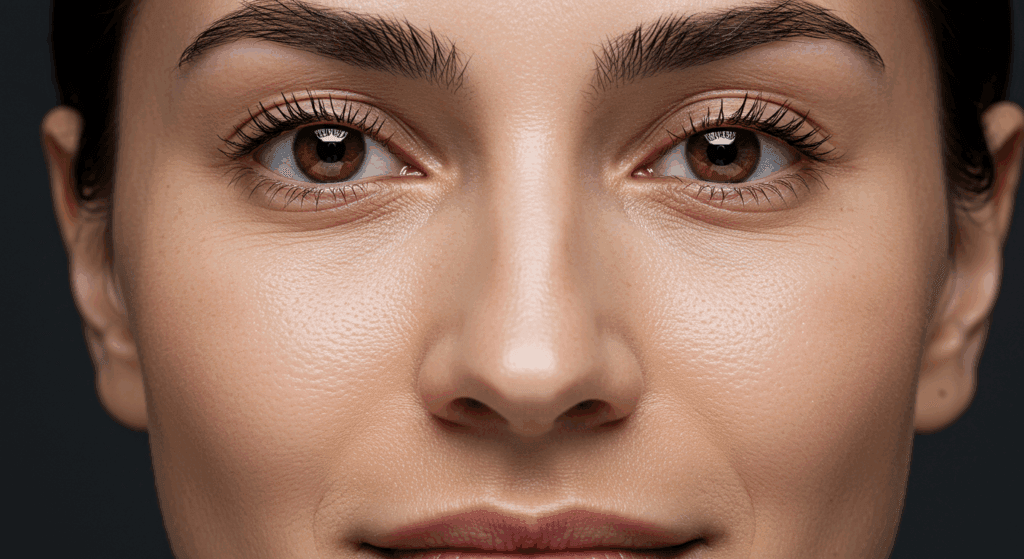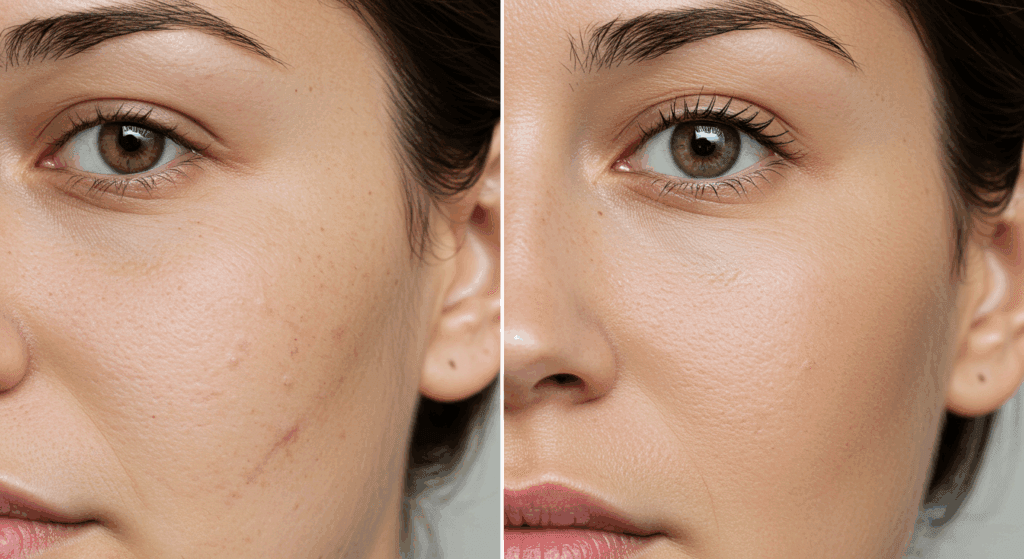One of the most common concerns for patients considering facial plastic surgery is, “Will I have visible scars?” It’s a valid question. The goal of any aesthetic procedure is to enhance your appearance without leaving obvious signs of surgery. The good news is that with modern surgical techniques and proper aftercare, scars can heal to be nearly invisible.
Dr. Berat Çiğdem believes that excellent scar management is a partnership between the surgeon’s skill and the patient’s diligent care. This guide explains his expert approach to achieving the faintest scars possible after facial surgery.

Table of Contents
The Foundation of a Faint Scar: The Surgeon’s Technique
Minimizing a scar begins in the operating room. The most critical factor is the surgeon’s ability to place incisions in areas where they are naturally concealed.
- Facelift Incisions: Are carefully placed within the natural contours of the ear and hidden in the hairline.
- Blepharoplasty (Eyelid Surgery) Incisions: For upper eyelids, incisions are hidden in the natural crease. For lower eyelids, the incision can often be made inside the lower eyelid (transconjunctival), leaving no visible external scar at all.
Dr. Çiğdem’s meticulous technique focuses on closing these incisions without tension, which is key to preventing wide or raised scars.
Phase 1: Immediate Post-Op Care (The First 2 Weeks)
This initial healing phase is crucial. Your primary job is to protect the incisions to allow your body to heal efficiently.
- Keep the Area Clean: Gently clean the incision sites as instructed by your surgical team to prevent infection, which can significantly worsen scarring.
- Avoid Tension: For facelift or brow lift patients, this means avoiding turning your head sharply or bending over. Any stress on the incision line can interfere with healing.
- Use Ointments as Directed: You will likely be prescribed an antibiotic ointment to apply to the incisions. This keeps the area moist and protected from bacteria.
Phase 2: Active At-Home Scar Management (Weeks 2-12)
Once your incisions have fully closed (usually around 2 weeks), you can begin a more active role in managing your scar’s appearance.
- Sun Protection: Your Scar’s Biggest Enemy: This is the most important rule. New scars are highly susceptible to UV rays, which can cause them to darken permanently (hyperpigmentation). Protect your incisions with a high-SPF, broad-spectrum sunscreen for at least a year after surgery.
- Silicone Gels and Sheets: The Gold Standard: Silicone is clinically proven to be one of the most effective topical treatments for scars. It hydrates the scar tissue, reduces redness, and helps to flatten and soften it. For best results, it should be used consistently for 2-3 months.
- Gentle Scar Massage: Once Dr. Çiğdem gives you the approval, you can begin gently massaging the scar for a few minutes each day. This helps to break down collagen buildup and improve the scar’s flexibility and appearance.
Phase 3: Advanced Medical Treatments (If Needed)
For the vast majority of patients, the steps above are all that is needed. However, for individuals who are genetically prone to more prominent scarring, advanced treatments are available.
- When to Consider Further Treatment: If a scar remains red, raised, or itchy after several months, you can discuss further options with your surgeon.
- Available Options: Treatments like steroid injections can flatten raised (hypertrophic) scars, while laser therapy can reduce redness and improve texture. These are typically not necessary for most facial surgery patients.

Dr. Çiğdem’s Philosophy: A Partnership in Healing
Achieving a barely-there scar is a team effort. It starts with Dr. Çiğdem’s meticulous surgical skill and ends with your commitment to following the aftercare instructions. By working together, you can ensure your results are beautiful and your scars are your best-kept secret.
Frequently Asked Questions (FAQ)
Q1: How long will it take for my facial surgery scar to fade? A: Scars go through a maturation process that can take a full year or even longer. They will be pink or red at first and will gradually fade and soften over 12-18 months.
Q2: Will my facelift scars be visible? A: When placed correctly in the natural creases of the skin, facelift scars are very difficult to detect once they have fully healed, especially when hair is worn down.
Q3: What is the best over-the-counter scar cream? A: While many products make claims, silicone-based gels and sheets are the most scientifically supported non-prescription option for effective scar management.
Q4: When can I start wearing makeup over my incision? A: You must wait until the incision is completely closed and all scabs have naturally fallen off (usually 10-14 days). Applying makeup too early can cause irritation and infection.
Q5: What are the signs of a poorly healing scar? A: Signs include excessive redness, itching, or pain that persists for months, or a scar that becomes increasingly raised and thick. If you have any concerns, contact your surgeon immediately.
Learn more about our meticulous surgical techniques and aftercare programs.
Schedule your consultation with Dr. Berat Çiğdem to discuss how you can achieve beautiful results with minimal scarring.

